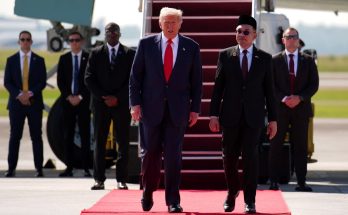Intertwining the destinies and dreams of 1.8 billion people, India and the 10-nation Association of Southeast Asian Nations (ASEAN) are poised to pitch their mutually empowering multi-faceted relations into a higher trajectory. In the dying days of December 2012 and amid the gloom of the recession-ridden Euro zone, a new narrative of renaissance and renewal was born in New Delhi as some of the world’s rapidly growing economies bonded together to create new win-win opportunities. The leaders of India and the ASEAN gathered in the Indian capital December 20-21 to celebrate two defining milestones in their relationship: the 20th anniversary of India’s sectoral dialogue partnership with the ASEAN and the 10th anniversary of their annual summits.
The atmosphere was celebratory and surcharged with optimism. The Great Asian Dream no longer appeared to be a myth; the India-ASEAN Commemorative summit marked the high noon of India’s Look East policy, that was quietly launched sans fanfare in the early Nineties to leverage new opportunities unleashed by India’s newly-launched economic reforms and an economically vibrant Southeast Asian region that is home to tiger economies and cutting-edge innovation and enterprise. India was quick to seize the initiative to push closer economic ties with a region that is suffused with traces of Indian culture and philosophy that go back to the times of Mahabharata and Ramayana.
Three Cs
This synthesis of commerce, culture and creativity remains the tripod on which India has chosen to rest its Look East policy even as it goes on to reinvent the ancient ties by imparting a strategic dimension in light of the shifts in the world order in the 21st century. The meeting of minds was clearly visible at the two-day commemorative summit in New Delhi, which was marked by a unique confluence of economic and strategic interests between India and the ASEAN. At the plenary, all leaders of ASEAN countries lauded India’s emergence as a power centre and sought closer ties. Prime Minister Manmohan Singh, an ardent proponent of “an arc of prosperity” across Asia, encapsulated the essence of what brings India and the ASEAN together when he said in his inaugural address at the summit that “Our shared values, convergent world views and similarities in approaches to the region should help us make the India-ASEAN relationship more comprehensive and elevate it to a Strategic Partnership for the next decade and beyond.”
The summit, themed “ASEAN-lndia Partnership for Peace and Shared Prosperity,” culminated in an all-encompassing vision document that elevated India’s ties with the ASEAN to the level of strategic partnership and formally unveiled the conclusion of negotiations on a FTA in services and investments, a potential game-changer in the expanding bilateral relations marked by win-win linkages and investments. It complements the FTA in goods, which was sealed in 2009 and became fully operational in August last year, leading to a near doubling of bilateral trade. Raising the bar higher, India and the ASEAN have now set a target to scale up bilateral trade from $80 billion to $100 billion by 2015.
In its Look East policy, besides working with the ASEAN, India has also built robust multi-pronged bilateral relations with individual ASEAN countries. New Delhi has already sealed bilateral FTAs with Singapore and Malaysia and is in the process of negotiations with Indonesia and Thailand.
Strategy and security
While trade and investment will remain the heart of the India-ASEAN engagement, the two sides have opened new vistas of cooperation on security issues and imbued bilateral ties with the much-needed strategic depth. The festering tensions in the South China Sea have lent an added urgency to the strategic dimension of the relationship. “Our responsibility to work for peace has increased and become more urgent”, this concern was shared by ASEAN leaders, with many of them pitching for a proactive role for India in regional affairs.
With the economies of India and the ASEAN growing and their energy needs going up, another area that is bound to bring the two sides closer is in pursuit of maritime security and enhanced cooperation in combating terrorism and piracy. India has consistently pitched for freedom of navigation, which has received across-the-board endorsement from ASEAN nations and East Asia. The vision document underscored the need for India and the ASEAN leaders to “strengthen cooperation to ensure maritime security and freedom of navigation, and safety of sea lanes of communication for unfettered movement of trade in accordance with international law.”
Connectivity and culture
Connectivity holds the key to deeper integration of India and ASEAN physically, economically and culturally. India and ASEAN are poised to create a web of closer rail, road and air links. The dream of the India-Myanmar-Thailand Trilateral Highway is on course to become reality by 2016 and is poised to be extended to Lao and Cambodia. From India’s point of view, this will be the highway of prosperity for India’s northeastern states by linking them to vibrant markets and high-tech hubs of Southeast Asia. A new highway project that will connect India, Myanmar, Laos, Vietnam and Cambodia has also been cleared.
Clearly, physical connectivity is not enough. A host of recent initiatives have sought to position people at the heart of this vibrant relationship. The cultural connections were rekindled when the India-ASEAN car rally, that traversed over 8,000 km across the region, brought alive centuries-old civilisational linkages between India and the ASEAN. The rally was flagged off from Yogyakarta, Indonesia on November 25, 2012 and reached New Delhi after an exhilarating odyssey on December 21, 2012 where it was flagged off by Manmohan Singh, with all ASEAN leaders waving flags and cheering on the participants. The rally “symbolises the vision of an ASEAN-India community where people, goods, services and ideas can travel freely between us,” said Manmohan Singh. INS Sudarshini, an Indian naval ship, docked at the ports of the ASEAN countries, reviving and building on an ancient sea route link with the region.
New Delhi’s Look East policy is, however, not confined to the ASEAN, but has expanded to include the much larger 18-nation East Asia Summit (EAS), which is seeking to craft “an open, balanced, inclusive and rule-based architecture in the region for our collective security, stability and prosperity.”
What underpins India’s overarching vision of its Look East policy is its belief in the ASEAN’s role as “the bridge to the East” and the pivotal role Southeast countries play as markets and technological hubs that can have multiple spin-off benefits for Indians in the north-eastern states. India has eloquently reaffirmed the ASEAN’s centrality in the ongoing project of renaissance and renewal in the region by pledging support to the creation of the ASEAN Community in 2015.
The intertwining of the destinies of India and the ASEAN, and the larger East Asia is a good news story that is still unfolding. It’s a journey that is set to cross new milestones in the future.
(This article has also been published in The Daily Sun. The writer is Editor-in-Chief of India Writes (www.indiawrites.org), an online platform
focused on international affairs and promoting dialogue about cultures and ideas.)
Author Profile

- Manish Chand is Founder and Editor-in-Chief of India Writes Network (www.indiawrites.org) and India and World, a pioneering magazine focused on international affairs. He is CEO, Centre for Global India Insights, an India-based think tank focused on global affairs.
Latest entries
 India and the WorldOctober 27, 2025Modi hails the century of India and ASEAN, backs ASEAN centrality
India and the WorldOctober 27, 2025Modi hails the century of India and ASEAN, backs ASEAN centrality India and the WorldOctober 26, 2025Act East: Five reasons why ASEAN summit in Malaysia matters
India and the WorldOctober 26, 2025Act East: Five reasons why ASEAN summit in Malaysia matters India and the WorldOctober 25, 2025Malaysia Summit: India can play a bigger role in ASEAN: Anil Wadhwa
India and the WorldOctober 25, 2025Malaysia Summit: India can play a bigger role in ASEAN: Anil Wadhwa India and the WorldOctober 2, 2025With US frowning, India to host Putin in December
India and the WorldOctober 2, 2025With US frowning, India to host Putin in December







